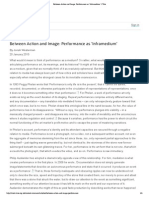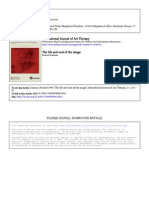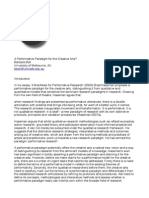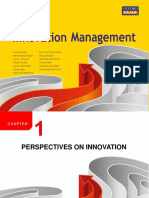01/02/13 12:37 AMRe-thinking Research: Autoethnographies « Discovering Voices, Discovering SelvesPage 1 of 5http://discoveringvoices.com/2008/07/02/re-thinking-research-autoethnographies/
Discovering Voices, Discovering Selves
日本の言語そして性別についての論文。
Feeds:
PostsComments
Re-thinking Research: Autoethnographies
July 2, 2008 by MarlenDuring the first two interviews that took place as an attempt at preliminary information gathering, I began to imagine that instead of quantitative research (and it should be noted that though I started there, I’ve since moved far from notions of needing to carry outquestionnaire-genre research) it might be more interesting to focus on the qualitative, that is, to focus on the conversations that ensue with theparticipants. However, I also noticed that the information being gathered during these conversations, whether or not the intention of myinterviews, took the form of stories. As I tried to understand the stories, I thought that perhaps it would be much more useful to counsel theparticipants in self-reflection than to simply interpret the stories myself. After all, if I am the lone interpreter, what might be missing from theresearch and analyses?This leads me to a consideration of autoethnographic approaches to collecting data whereby the participants share their own stories andreflect on both the content and process. This approach of situating oneself and one’s behavior within a specific cultural context in order toanswer a question or address a specific phenomenon now resonates as almost
de riguer
considering my own experiences writingautoethnography, my freshman composition curriculum, and the fact that I hope to weave a narrative of my own second languageexperiences throughout the dissertation.In
The Making of a Perfume Critic: An exploration in autoethnography, the semiotics of names, and the development of voice and identity
(http://doctormarlen.files.wordpress.com/2007/04/the-making-of-a-perfume-critic-essay.doc)
,
a manuscript I completed as part of anindependent seminar during my doctoral coursework in 2006, I seem to foreshadow my move towards autoethnography as a data collectionapproach. I write:After surveying recent writing about autoethnography (Bennett, 2004; Bocher & Ellis, 2000; Coffey, 1999; Denzin, 1989; Denzin & Lincoln,2000; Denzin, 2006; Ellis, 1997; Ellis, 2004; Ellis & Bochner, 2000; Hayano, 1979; Holt, 2003; Pratt, 1999; Reed-Danahay, 1997; Russell, 1999;Smith, 2005) and in an attempt to find guiding principles from which to proceed with the current research, I have come to the conclusionthat prescriptions for performing autoethnographic research vary wildly and are largely dependent upon a given discipline and specificwriter. Smith writes that “the exact definition of the term is elusive, and there are many other genres, too numerous to list, that fall underits umbrella” (2005, Section: What is autoethnography?). While some of the definitions seem to focus on explorations of culture andcultural identity (such as those by Hayano, Reed-Danahay, and Pratt), others focus on narrative inquiry (such as those by Coffey, Ellis, andEllis & Bochner) and still others synthesize both (such as those by Denzin and Bennett). On a University of Wisconsin website that offersinformation to its college-level writers, Hunter, an English professor, writes:To begin, ethnography is a social science method of qualitative research that describes human social phenomena based on fieldwork, andin autoethnography (AE) the researcher becomes the primary participant/subject of the research in the process of writing personal storiesand ethnographic narratives. Similar to ethnography and its focus on the study of experience, AE includes direct (and participant)observation of daily behavior, unearthing of local beliefs and perception and recording of life history (e.g. kinship, education, etc.), in-depth interviewing, “the analysis of data involves interpretation on the part of the researcher” (Hammersley in Genzuk). Again, ratherthan a portrait of the Other (person, group, culture), the difference is that the researcher is constructing a portrait of the self. (paragraphs 2and 3)Schwandt adds that the stories used in autoethnography are “intended to illustrate and evoke rather than to state or make a claim, andthat the author of such a text aims to invite readers into the text to relive the experience rather than to interpret or analyze what the authoris saying” (2001, p. 13). I’d like to highlight the use of the word interpretation in Hunter’s definition above before further commenting onSchwandt.


01/02/13 12:37 AMRe-thinking Research: Autoethnographies « Discovering Voices, Discovering SelvesPage 2 of 5http://discoveringvoices.com/2008/07/02/re-thinking-research-autoethnographies/
Fish writes that interpretation “suggests an imposition upon raw data of a meaning not inherent in them” (1979, p. 244). Fish’sdefinition and the process of interpretation inherent in Hammerley’s “analysis of data” (in Hunter) hints at a semiotics, as Leeds-Hurwitzwrites, “studying how something functions in the mind of an interpreter to convey a specific meaning in a specific situation” (1993, p. 7).Fish and Leeds-Hurwitz as semioticians, where semiotics is defined as “the study of signs and sign systems” (Leeds-Hurwitz, 1993, p. 6),might argue that ethnography requires a consideration of symbols and symbolic acts. As such, returning to Schwandt, could it be possiblethat the autoethnographic story is in itself a metaphorical symbol in that it illustrates a particular experience? Eco famously writes,“Semiotics is concerned with everything that can be taken as a sign. A sign is everything which can be taken as significantly substitutingfor something else” (1976, p. 7). In autoethnography, the signifier is the story, the signified is the meaning inherent in the experiencedescribed in the story.Though autoethnography as a genre is still considered by some to be a controversial approach to qualitative research (Duncan,2004; Holt, 2003), Duncan writes:If the value of autoethnography is to be understood more clearly by the wider research community, those engaged in this emerging artneed to assist their readers in judging its worth. To include in the research report adequate justification for the choice of this method anddemonstration of how appropriate evaluation criteria might be applied are two ways in which researchers can help reviewers appreciatewhat autoethnography has to offer. (Duncan, 2004)It occurred to me after the above conversation and after browsing the
Handbook of Qualitative Inquiry
that my lifelong practice of journalwriting just might be considered a form of autoethnography where reflective writing is a method of narrative inquiry (Richardson, 2000).Could it be that my practice of written self-analysis – posing questions, writing stories as responses, and then examining the stories formeaning – is actually ethnographic research?Though the dissertation itself will not be an autoethnography, I would like to ask my participants to complete their own autoethnographies –to tell their stories and to reflect on the meanings inherent in the stories. Afterall, I find significant my interviewee’s own surprise at how“interesting” the questions I’ve posed have been, and even more significant that they felt as if they were “learning” about themselves throughthe interview process. Reflection itself should be a key tool in examining the significance of English experiences in the lives of queer Japaneseand may reveal more than the stories themselves.Here are a few ideas about autoethnography (analytic, evocative, heartful, etc):ANALYTIC AUTOETHNOGRAPHY (http://jce.sagepub.com/cgi/content/abstract/35/4/373) Leon Anderson Journal of Contemporary Ethnography, Vol. 35, No. 4, 373-395 (2006)Autoethnography has recently become a popular form of qualitative research. The current discourse on this genre of research refers almostexclusively to “evocative autoethnography” that draws upon postmodern sensibilities and whose advocates distance themselves fromrealist and analytic ethnographic traditions. The dominance of evocative autoethnography has obscured recognition of the compatibility of autoethnographic research with more traditional ethnographic practices. The author proposes the term analytic autoethnography to referto research in which the researcher is (1) a full member in the research group or setting, (2) visible as such a member in published texts,and (3) committed to developing theoretical understandings of broader social phenomena. After briefly tracing the history of proto-autoethnographic research among realist ethnographers, the author proposes five key features of analytic autoethnography. He concludeswith a consideration of the advantages and limitations of this genre of qualitative research.REPRESENTATION AND THE TEXT: REFRAMING THE NARRATIVE VOICE (http://books.google.com/books?hl=en&lr=&id=s88LcVh_yJ4C&oi=fnd&pg=PA115&dq=autoethnography+sociology&ots=pUP3LgVhkr&sig=aiTo1nVe2Es5sSJfeNY48Z93Vg8)William Tierneysee Evocative Autoethnography by Carolyn EllisThis book focuses on representations of contested realities in qualitative research. The authors examine two separate, but interrelated,issues: criticisms of how researchers use “voice”, and suggestions about how to develop experimental voices that expand the range of narrative strategies.Changing relationships between researchers and respondents dictate alterations in textual representations — from the“view from nowhere” to the view from a particular location, and from the omniscient voice authors have struggled with voice in to thepolyvocality of communities of individuals. Examples of new representations and textual experiments provide models for how some theirtexts, and in so doing, broaden who they and we mean by “us”.HEARTFUL AUTOETHNOGRAPHY (http://qhr.sagepub.com/cgi/content/abstract/9/5/669) Carolyn EllisQualitative Health Research, Vol. 9, No. 5, 669-683 (1999)
The author seeks to develop an ethnography that includes researchers’ vulnerable selves, emotions, bodies, and spirits; produces evocative stories that
01/02/13 12:37 AMRe-thinking Research: Autoethnographies « Discovering Voices, Discovering SelvesPage 3 of 5http://discoveringvoices.com/2008/07/02/re-thinking-research-autoethnographies/
create the effect of reality; celebrates concrete experience and intimate detail; examines how human experience is endowed with meaning; is concernedwith moral, ethical, and political consequences; encourages compassion and empathy; helps us know how to live and cope; features multiple voices andrepositions readers and “subjects” as coparticipants in dialogue; seeks a fusion between social science and literature in which, as Gregory Bateson says,“you are partly blown by the winds of reality and partly an artist creating a composite out of the inner and outer events”; and connects the practices of social science with the living of life. In short, her goal is to extend ethnography to include the heart, the autobiographical, and the artistic text. Thisarticle provides a conversation with a student researching breast cancer that introduces issues in heartful autoethnography.
Authoring Self and Others in the Social Sciences/Humanities (http://www.qualitative-research.net/index.php/fqs/article/view/106/221)Mary H. MaguireFQS, Volume 7, No. 2, Art. 16 – March 2006ELLIS’ methodological novel about autoethnography is an example of the increasing emergence of alternative forms of writing in thesocial sciences/humanities that focus on a dialogic notion of self, voice and human consciousness. Autoethnography is a genre of writingin which authors draw on their own lived experiences, connect the personal to the cultural and place the self and others within a socialcontext (REED-DANAHAY, 1997). To understand this commitment to self-reflexive ways of knowing and writing, I draw on BAKHTIN’sconcept of authoring as creative answerability/responsibility (otvetsvennost) that views a self as answerable not only to the socialenvironment, but is also answerable for the authoring of its responses. The Ethnographic I serves as a useful text to engage the issues thatautoethnography raises both as genre and alternative discourses for authoring self and others.Posted in About This Project (proposal) | 6 Comments
6 Responses
1.
on October 16, 2009 at 2:52 am | Reply
Intro to Methodology « Jamie Mason's Blog
[...] many questions on data collection or about methods. I have read Marlen’s post from his blog “Re-Thinking Research: Autoethnographies” I found it to be very helpful with great examples of autoethnographies from the research he [...]2.
on July 23, 2011 at 7:42 pm | Reply
Social and Political Science Academic Communication | COMMUNICATION & COMPOSITION
[...] http://discoveringvoices.com/2008/07/02/re-thinking-research-autoethnographies/ [...]3.
on July 23, 2011 at 7:43 pm | Reply
Critical Info Mngmt/Professional Wrtg for Graduate Technology | COMMUNICATION & COMPOSITION
[...] http://discoveringvoices.com/2008/07/02/re-thinking-research-autoethnographies/ [...]4.
on July 23, 2011 at 7:44 pm | Reply
Writing Module: Auto-ethnography | COMMUNICATION & COMPOSITION
[...] Critique of Current Practice: Ten Foundational Guidelines for Autoethnographers; ; CLICK ME to read Marlen’s dissertation blog andhis thoughts about using auto-ethnography. Lots of [...]About these ads (http://en.wordpress.com/about-these-ads/)
01/02/13 12:37 AMRe-thinking Research: Autoethnographies « Discovering Voices, Discovering SelvesPage 4 of 5http://discoveringvoices.com/2008/07/02/re-thinking-research-autoethnographies/
5.
on October 18, 2012 at 7:37 pm | Reply
FYW 110: Writing & Inquiry (ESL) » Dr. Marlen Elliot Harrison
[...] http://discoveringvoices.com/2008/07/02/re-thinking-research-autoethnographies/ [...]6.
on October 21, 2012 at 2:27 pm | Reply
FYW 101: Writing & Inquiry » Dr. Marlen Elliot Harrison
[...] http://discoveringvoices.com/2008/07/02/re-thinking-research-autoethnographies/ [...]Comments RSSBlog at WordPress.com.Theme: MistyLook by WPThemes.Follow
Follow “Discovering Voices, Discovering Selves”
Powered by WordPress.com




























































































